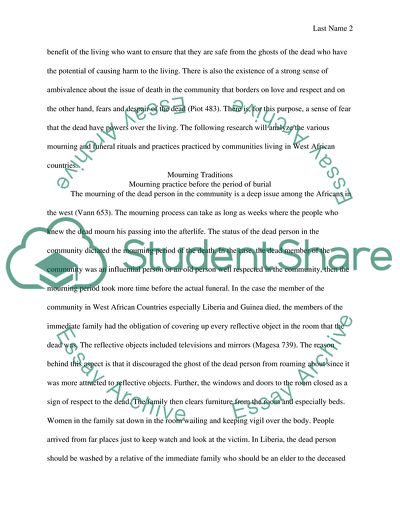Cite this document
(Funeral and Mourning Rituals in West Africa Research Paper Example | Topics and Well Written Essays - 3250 words, n.d.)
Funeral and Mourning Rituals in West Africa Research Paper Example | Topics and Well Written Essays - 3250 words. https://studentshare.org/anthropology/1870165-death-in-west-africa-funeral-and-mourning-rituals
Funeral and Mourning Rituals in West Africa Research Paper Example | Topics and Well Written Essays - 3250 words. https://studentshare.org/anthropology/1870165-death-in-west-africa-funeral-and-mourning-rituals
(Funeral and Mourning Rituals in West Africa Research Paper Example | Topics and Well Written Essays - 3250 Words)
Funeral and Mourning Rituals in West Africa Research Paper Example | Topics and Well Written Essays - 3250 Words. https://studentshare.org/anthropology/1870165-death-in-west-africa-funeral-and-mourning-rituals.
Funeral and Mourning Rituals in West Africa Research Paper Example | Topics and Well Written Essays - 3250 Words. https://studentshare.org/anthropology/1870165-death-in-west-africa-funeral-and-mourning-rituals.
“Funeral and Mourning Rituals in West Africa Research Paper Example | Topics and Well Written Essays - 3250 Words”. https://studentshare.org/anthropology/1870165-death-in-west-africa-funeral-and-mourning-rituals.


